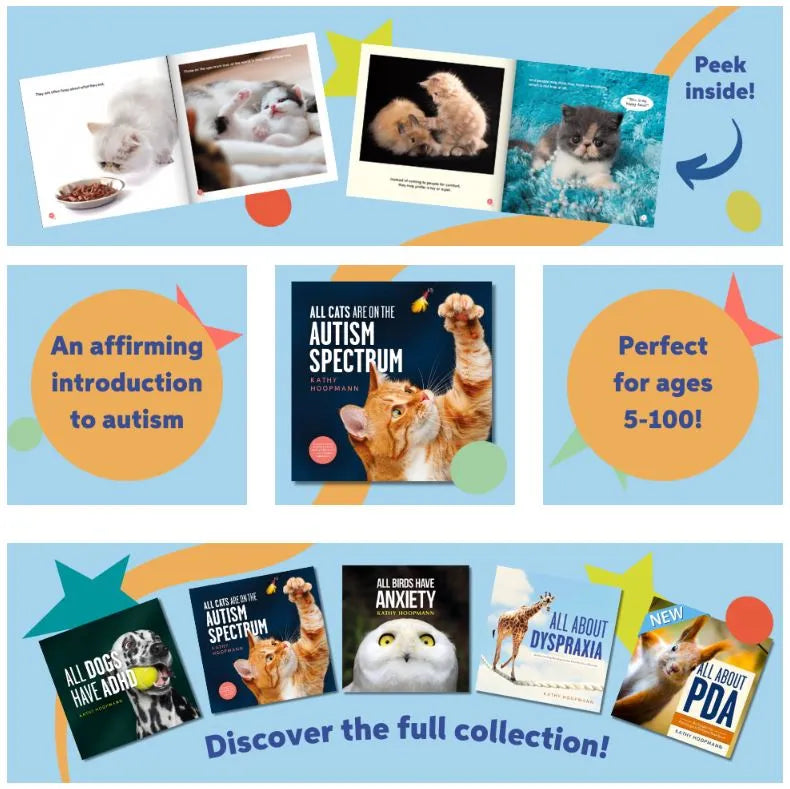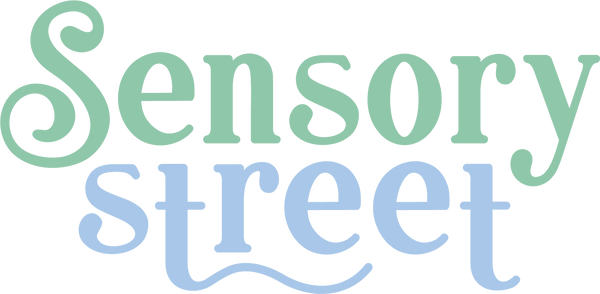Book - All Cats are on the Autism Spectrum by Kathy Hoopmann
Book - All Cats are on the Autism Spectrum by Kathy Hoopmann
Couldn't load pickup availability
- Same day shipping available for orders placed before 1pm Mon-Fri
- Express Shipping Available
- Flat Rate Shipping $12 Australia Wide *Excludes heavy or bulky items
A gentle, affirming introduction to autism, this refreshed edition of the beloved All Cats Have Asperger Syndrome features all-new feline photography and inclusive, gender-neutral language. Playful yet profound, All Cats are on the Autism Spectrum brings traits like sensory experiences, social difference, and communication challenges to life through cats’ behaviours, prompting understanding and connection. Educators, therapists, and families can use it as a warm bridge to discuss neurodiversity and celebrate differences.
Cats take a playful look at the world of autism, and these fun feline friends will strike a chord with all those who are familiar with typical autistic traits, bringing to life common characteristics such as sensory sensitivities, social issues and communication difficulties.
Touching, humorous and insightful, this sturdy hard-cover book evokes all the joys and challenges of being on the autism spectrum, leaving the reader with a sense of the dignity, individuality and the potential of autistic people.
Why You’ll Love This Book
- Inclusive, updated version of a much-loved classic.
- Celebrates autism with humour and warmth using playful cat imagery.
- Helps children understand their own experiences with pride.
- Explains autism traits in a simple, relatable way.
- Encourages acceptance and neurodiversity celebration in classrooms.
Who This Book Is For
- Children on the autism spectrum.
- Parents explaining autism to siblings and family.
- Teachers promoting inclusivity and understanding.
- Therapists introducing autism awareness gently.
Click here to view other Kathy Hoopmann books.
From the author Kathy Hoopmann:
What’s in a name? A lot actually.
In 2006, I wrote All Cats Have Asperger Syndrome with the express purpose to demystify the diagnosis in a fun, easy-to-read format. In 2013, the diagnostic tool used by professionals in the United States (the DSM5) eliminated the term Asperger Syndrome and placed it under the generic umbrella of Autism Spectrum Disorder. Asperger Syndrome was now to be diagnosed as Autism Spectrum Disorder (ASD) Level 1. Now that’s a mouthful!
Since then, there has been much debate and confusion about the correct terminology to be used. Is it Autism Spectrum Disorder (ASD) or Autism Spectrum Condition (ASC) or just the Autism Spectrum (AS)? Should we say a person with autism or an autistic person or someone who is neurodiverse?
Apart from the change in the diagnostic terms used, other changes were occurring in the autism community. In 2006, it was generally accepted that most of those diagnosed were boys. Now it is known that almost as many girls are on the spectrum. As All Cats Have Asperger Syndrome was written with male pronouns, this needed addressing. Fifteen years ago it was considered empathetic to say there is a little bit of Asperger’s in us all. Now that statement is recognised as not only incorrect but insulting to those on the spectrum as it belittles the very real challenges they face daily.
So when it came time to update my book to current terminology and sensitivities, I was faced with a very difficult task to get things right, especially knowing that word usage and correctness changes regularly.
All Cats are on the Autism Spectrum is written with the very best intentions to reflect the wishes of the autistic community in language and concepts. I know that my choices will not please everyone and that views on language will continue to evolve. However words do matter, and sometimes we get things wrong, and that’s ok if we are gracious about respecting the views of others and are prepared to use their preferred language once we know what it is.
I pray that my readers will see past the finer details of disagreement and join with me in celebrating, and growing in understanding of, the richness and diversity of the autistic community.
Share




